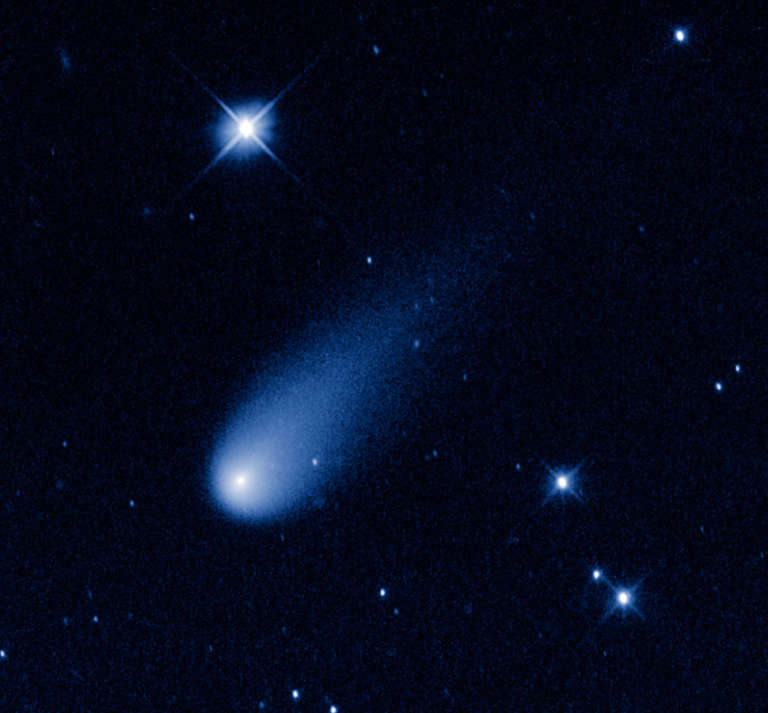Jason Davis • Jul 05, 2013
Hubble captures time-lapse of comet ISON
The Hubble Space Telescope has captured a series of images showing Comet C/2012 S1 (ISON) continuing its plunge toward the sun. In the resulting time-lapse video, ISON travels 34,000 miles in 43 minutes. That’s almost three times the speed of spacecraft in low-Earth orbit. You can clearly see the comet changing position relative to the background stars.
Hubble View of Comet ISON This time-lapse sequence of images from the Hubble Space Telescope shows comet ISON as it appeared on May 8, 2013. At the time the images were taken, the comet was 403 million miles from the Earth, between the orbits of Mars and Jupiter. The Hubble observations were made during a 43-minute span, and then compressed into a five-second sequence. The comet travels 34,000 miles in this video.Video: NASA / ESA / Hubble Heritage Team (STScI/AURA)
ISON is predicted to be a naked-eye comet this fall, becoming visible in November. It is a sungrazing comet, meaning it will dive perilously close to the sun as it reaches perihelion. Hubble snapped the images on May 8 using Wide Field Camera 3. The comet is shown in visible light using false color.

Support our core enterprises
Your support powers our mission to explore worlds, find life, and defend Earth. You make all the difference when you make a gift. Give today!
Donate

 Explore Worlds
Explore Worlds Find Life
Find Life Defend Earth
Defend Earth

